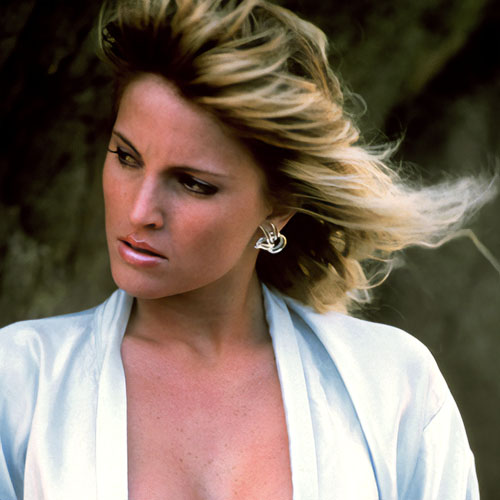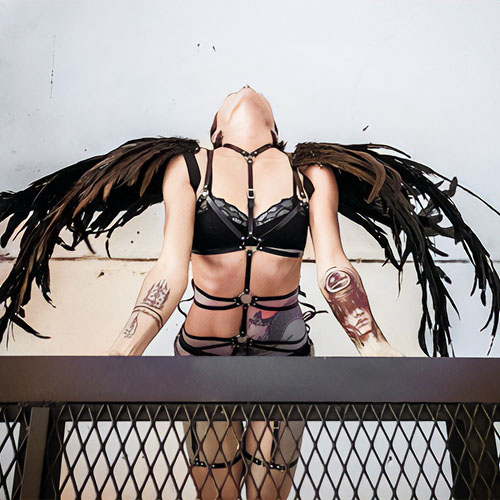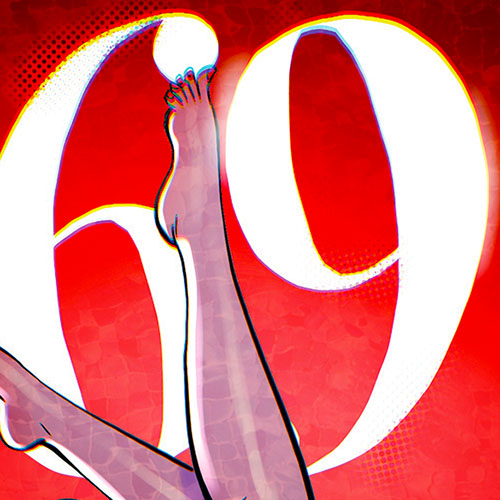Sex doesn’t have to take a central role in screen depictions of polyamory and non-monogamy, but, as in real life, it certainly makes things more interesting.
PolyLove on the Big and Small Screen
 Given an estimated 20 percent of people have tried some form of ethical non-monogamy, around 70 percent have had an affair, and the rest of us are too scared to admit it, it’s no surprise multiperson romantic entanglements are becoming — albeit slowly — fodder for TV and filmmakers
Given an estimated 20 percent of people have tried some form of ethical non-monogamy, around 70 percent have had an affair, and the rest of us are too scared to admit it, it’s no surprise multiperson romantic entanglements are becoming — albeit slowly — fodder for TV and filmmakers
In a few short years, we’ve gone from the “Mormons only” polygamy storyline of Big Love, to the offhanded and non-defining non-monogamy of Ilana Glazer in Broad City. Refreshingly, Ilana isn’t a unicorn — a lover who falls into a relationship with an established couple in just the way that couple would want and is named after a mythical creature for good reason.
Izzy, in You Me Her, billed as TV’s “first polyromantic comedy” is one such creature. In falling hard for suburban Portland couple Jack and Emma, she allows ample space for the show’s writers to examine everything about coming out — to friends, neighbors and colleagues who just can’t understand why the loved-up “throuple” has lost its collective mind. Which is to say, the monogamy narrative in TV land and elsewhere remains the default, with queer, non-monogamous, asexual relationships being the stuff of the increasingly accepted (thanks, world!) “other.”
In Unicornland — an eight-part webseries about divorcée Annie — the established straight and lesbian couples are clearly the dysfunctional ones, having squabbles in her presence over how to tie bondage ropes and, incredibly awkwardly, describing unicorn Annie as a rarefied being who “deigns to bestow her presence on mortals.”
In Compersion — another superbly cast webseries crying out for a big-budget adaptation — a married couple with children navigate the tricky terrain of one partner wanting more than the other can give, starting with the daunting first step: “I wanna try polyamory … It’s something like, ‘You’re my husband, but I can have a boyfriend, too.’”
Ramping up the drama and steering clear of unicorns, Wanderlust follows parents Joy and Alan, who, beset by unresolved issues, open up their marriage, only to realize N+1 isn’t necessarily the magic formula they were hoping for.
On the big screen, Woody Allen’s 2008 film, Vicky Cristina Barcelona, remains something of a standard-bearer for straight male, non-monogamous fantasy thinking: two beautiful American women fall for an archetypical Latin lover, Juan Antonio, who remains in love with his gorgeous but unstable ex-wife, María Elena. Wouldn’t that be nice, men? (This is definitely not going to be your experience.)
Unicorns, meanwhile, enjoy a rare big-screen outing in the 2017 bio-drama Professor Marston and the Wonder Women, in the shape of Wonder Woman creator William Marston and his — and wife Elizabeth’s — polyamorous life partner, Olive Byrne.
It’s maybe not surprising that otherwise heteronormative male-female couples with an impossibly compliant sex-kitten love interest have dominated in the first wave of non-monogamous TV and film, and that webseries and outlier free-to-air comedies such as Threesome — with its two-men, one-woman triad — are still notable exceptions. It’s almost as if too much “weirdness” would blow our tiny minds.
But 2018’s Bohemian Rhapsody — for all its mixed reviews and rightful outrage at the near-erasure of Freddie Mercury’s queerness — does offer, very quietly, one of many polyamorous dynamics that deserves more screen attention, in the character of Mary Austin, who Mercury referred to as his “common-law wife.” In the film, as in reality, she exists not to the exclusion of other partners, but as a cherished source of mutual affection — the love, as the song goes, of Mercury’s life.
[Such was the article, excellent in its own right, as it appears in Penthouse Magazine. Given the freedom of the web, though, we felt like we could continue a bit. – Ed.]
Consider this, then, an addendum of perineum, if not precisely prurient, interest.
Polyamory in Print
First off, understand that at this point in our burgeoning web publishing department, assignments get strewn out in classic, time-honored tradition. Senior editors carefully analyze the original article, divining from it the depths of meaning from nuance to pith. After hours of weighty deliberation, this wise editor graces the staff with the fruits born of proper (and darned impressive) rumination by assigning the absolute perfect literary lackey to translate the current epic from print to digital publication. In other words, somebody looks at a list of stories in an excel file and assigns them randomly to anyone foolish enough to check their email regularly.
Full disclosure here, it might be that some person of a certain age in our group needed to ask another person in our group — she being some three decades or so younger than our original person — to translate what the heck a “heteronormative” person might even be. Would we recognize this creature if we met one, say, in line at a vaccination clinic? Well, after a fascinating conversation regarding gender identification and the baffling complexity facing young people today, said old person found himself suddenly able to translate into a language possibly more easy to understand.
Take the following two photographs:
Now these photos feature (left to right, top to bottom): Riley Nixon, Joanna Angel, and Small Hands, then Brad Newman, Izzy Lush, and Jason Moody. Most importantly, however, may well be that you had a substantially different visceral reaction to the threesomes presented. Based on the completely unscientific strategy of simply showing a few people in the (virtual) office, the top and bottom photos bring about substantially different responses — particularly in males. Based on our polling data, and again translated into old-people speak, bisexual women have become fascinating, compelling, illusions of sexuality, quite possibly having moved all the way up to admirable on our mental scales. Bisexual men, though, still spawn often queasy feelings of confusion, unease, and occasionally downright open ooginess. Fascinating, right?
While the top two shots come from modern Penthouse polyamorous play, the last one comes from the “Penthouse Vault” section, an area devoted to remastering and republishing the classic magazine layouts from the lengthy Penthouse history. We would have included one featuring two men and one woman captured during these vintage days, but somehow we could not find one. Apparently bisexual — or at the very least quite comfortable with their sexuality — men did not exist in those days. Who knew?
By the way, we cannot say what you should feel about all of this. Honestly many of us cannot even say for sure what we feel about it. We can tell you, however, that each of these scenarios reveal themselves much more fully in the digital pages of PenthouseGold. That may not mean much to most people, but it gets the “Shameless Plug” portion of our directives out of the way completely, so we’re taking the win.
Rest assured, however, that even in the scenes featuring a woman with two men, the males participants remain at all times respectfully distant from each other — because, y’know, oogey.






















